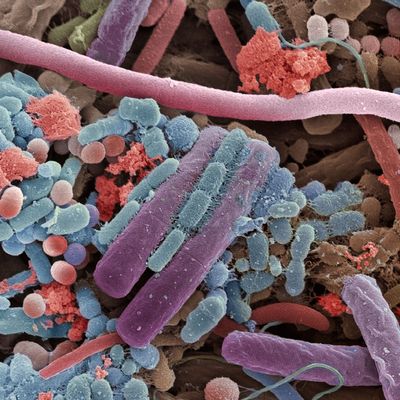
One of the many revolting things about transplanting from Illinois to New York is the finding that so many people, upon walking into an apartment, keep their shoes on — after trudging around a city they share with 8.5 million people. Despite the fact that bare feet are clearly more comfortable than whatever cool-as-hell kicks you’re sporting, it always struck me as absurd to track all of that outside inside. In sensible places like the Midwest and East Asia, you take the shoes off.
But, uncomfortably enough, a new essay in Trends in Microbiology contends that people would be better off if they brought more of the outdoors indoors. Yale University researchers Jordan Peccia and Sarah E. Kwan argue that architects — and presumably urban planners and other people who lay out the game board of city life — should be attending to the microbial “richness,” or the diversity of bacteria, in their homes. Microbes, as you may have heard, are the hot new thing in science, upon the collective realization that our colons are home to 100 trillion bacteria (!) of 1,200 species (!!). While science is at the very start of understanding the health outcomes of microbes, things like obesity, diabetes, and irritable bowel syndrome all seem to be tied to gut health. And it looks like doctors will be able to predict a colon-cancer sufferer’s prognosis by looking at their gut bacteria, and that personalized microbiome diets are the future of weight loss. To top it off, the White House just pledged to fund $121 million in microbiome research, with an additional $400 million from private donors.
And yet our primary environment is, of course, indoors; as Peccia and Kwan write, “Humans spend more than 90% of their time indoors, inhale 3500 (infant) to 16 000 (adult) liters of air per day, are continuously bathed in indoor air and resuspended floor and surface dust, and come into direct contact with surfaces, people, and pets.” And so it’s a good call to see how those environments are affecting our microbial health. Perhaps, Peccia and Kwan reason, people are doing themselves a disservice by waging a war on germs at home. For example, research indicates that kids in the field-working, unpasteurized-milk-drinking region of Bavaria have just a 5.2 percent risk of developing asthma, compared with 19.1 percent in suburban European families. As Science of Us has reported before, one of the takeaways of all this microbial research is that, in addition to eating lots of gut-healthy fiber, you should “stop trying to sterilize your home as if it were a surgical theater, which kills off more good bacteria than bad.”
To Peccia and Kwan, one of the best delivery mechanisms for germs is — you guessed it — pets, since cohabitating with an animal increases the “bacterial and fungal diversity in house dust” in a home. Indeed, a 2013 study found that feeding mice dust from dog-dwelling homes makes them more resilient to allergens. It’s enough to make Peccia and Kwan wonder aloud in their paper, “Can dog ownership be an urban equivalent of growing up on an animal farm?” Sounds like it. Or maybe you’d prefer a noble, fun-loving goat.




